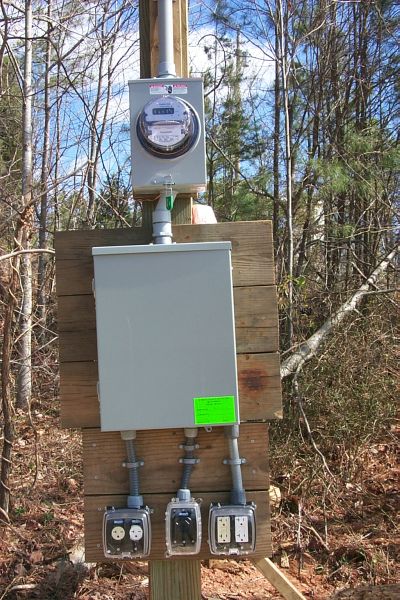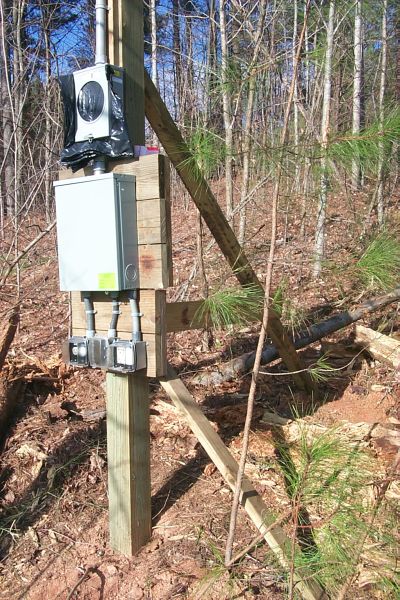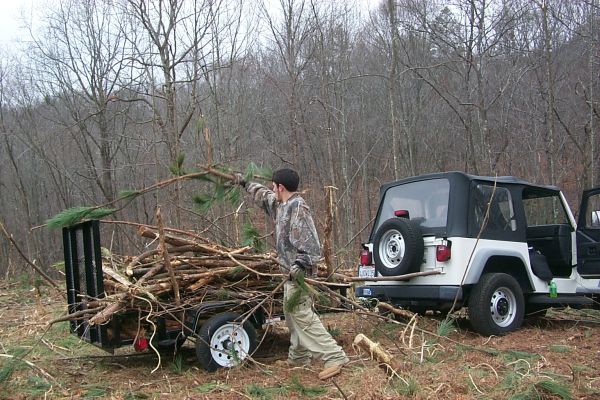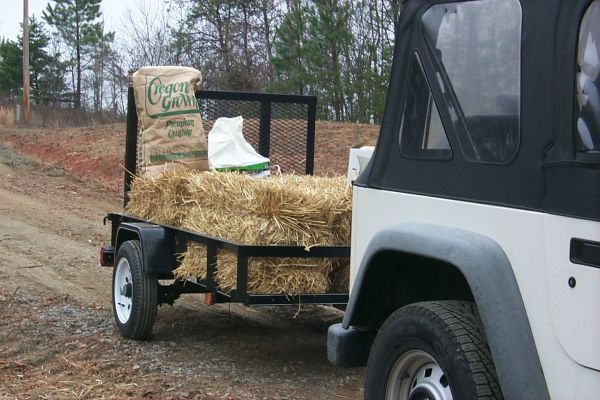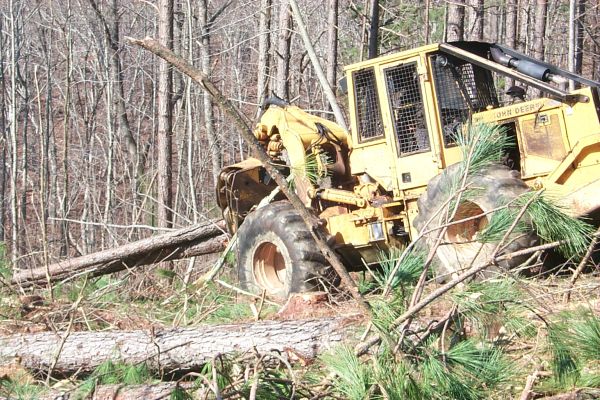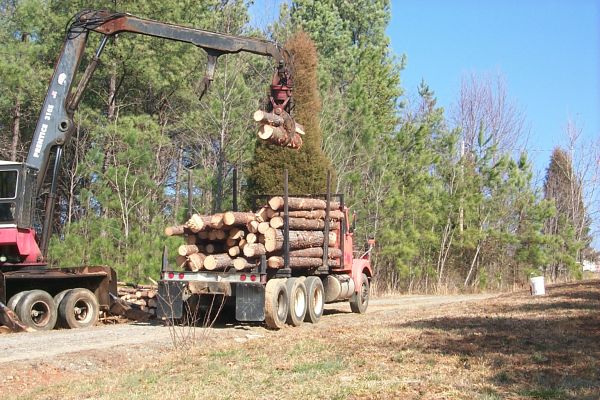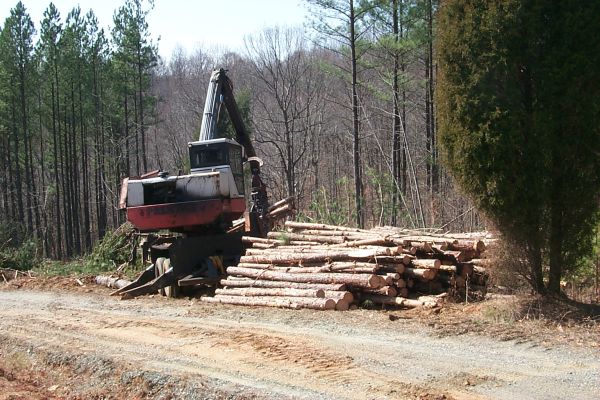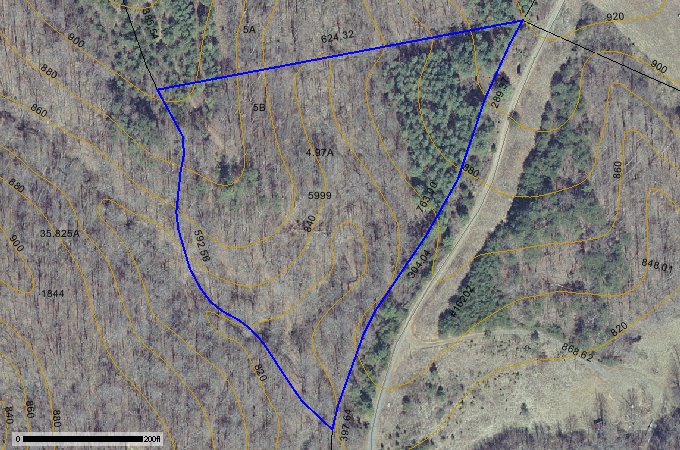
Pulling the wire to the power post
Energy United came out today and lit up my power post. I now have electricity! Which means that I can get a pump in the well and have water soon.
The newly installed electric meter reads 0000 kilowatt hours. There are two 220-volt outlets, a special outlet for the trailer, and four 110-volt outlets.
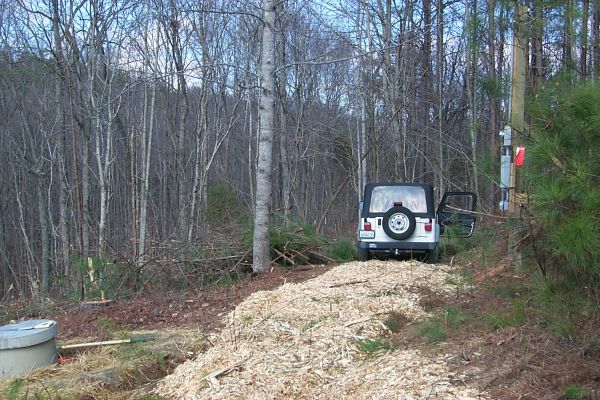
The trailer will be parked where the Jeep is sitting. It’s a pretty nice campsite if I do say so myself.
I had the tree guys, with their chainsaws and chipper machine, back for a second day. Things look much better, but I still have a lot of brush to deal with. Still, all the chainsaw work is done. The “downer” logs are sawed up and ready to cart off, and all the little injured trees that were sticking up in the air and looking pathetic have been cut down. We used some of the wood chips to pave an area for the trailer and Jeep.
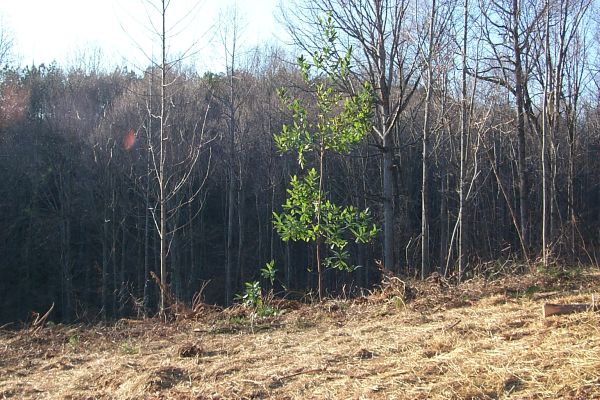
The mystery magnolia now has room to grow.
I have no idea how there came to be a magnolia tree in the middle of the pine woods. It was crowded by brush and honeysuckle, and it wasn’t getting much light because of the pine trees overhead, so it’s a bit spindly. Still, it appears healthy and absolutely determined to grow. We cleaned out all the competition. I’ll feed it. It’s got lots of light and space now, so we’ll see if it will fill out and take off.

